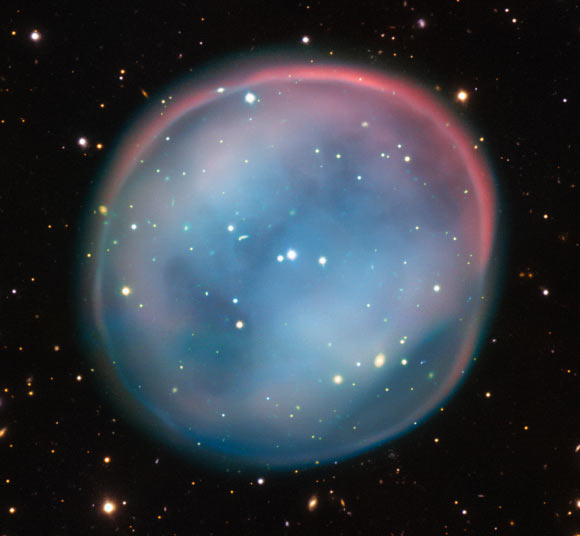ESO’s Very Large Telescope in Chile has captured the best view yet of the little-known nebula ESO 378-1, also known as the Southern Owl Nebula, PN K 1-22 or PN G283.6+25.3.
ESO 378-1 is a planetary nebula located in the constellation Hydra, approximately 3,250 light-years away. Its nickname relates to its visual cousin in the northern hemisphere, the Owl Nebula.
The object has a diameter of around 4 light-years. Like all planetary nebulae, it is a relatively short-lived phenomenon, lasting only a few tens of thousands of years.
Planetary nebulae like ESO 378-1 are created by the ejected and expanding gas of dying stars. Although they are intriguing objects in the initial stages of formation, these bubbles fade away as their constituent gas moves away and the central stars grow dimmer.
For a planetary nebula to form, the aging star must have a mass less than about 8 times that of the Sun. Stars that are heavier than this limit will end their lives in supernova explosions.
As these less massive stars grow old they start to lose their outer layers of gas to stellar winds. After most of these outer layers have dissipated, the remaining hot stellar core starts to emit UV radiation which then ionizes the surrounding gas. This ionization causes the expanding shell of ghostly gas to begin to glow in bright colors.
After the planetary nebula has faded away, the leftover stellar remnant will burn for another billion years before consuming all its remaining fuel. It will then become a tiny white dwarf that will slowly cool over billions of years.
Our own Sun will produce a planetary nebula several billion years in the future and will afterwards also spend its twilight years as a white dwarf.
Planetary nebulae also play a crucial role in the chemical enrichment and evolution of the Universe. Elements such as carbon and nitrogen, as well as some other heavier elements, are created in these stars and returned to the interstellar medium.








